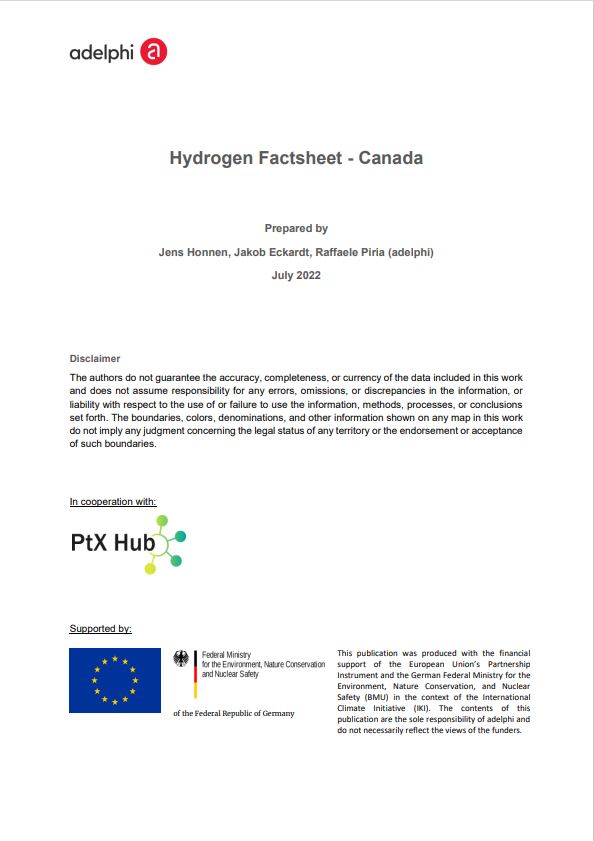Hydrogen Factsheet Canada
Canada is among the world’s leading countries in hydrogen technology development and grey hydrogen production. In December 2020, the country released its federal hydrogen strategy, which sees hydrogen as an opportunity to boost economic growth, reach climate neutrality and diversify the oil and gas sector. The strategy focuses on both blue and green hydrogen but emphasises the favourable conditions in Canada for fossil fuel-based hydrogen. For 2050, the strategy aims for Canada to be among the three largest “clean hydrogen” producers globally as well as a large exporter. By then, the energy carrier is envisioned to make up around one-third of final energy demand, predominantly in space and process heating, as industrial feedstock, in transport and for electricity storage. Several Canadian provinces have released their own hydrogen strategies based on their specific energy resources and assets.
With great potential for both onshore and offshore wind energy and a large hydropower capacity, Canada could become a green hydrogen exporter. Especially in the Atlantic provinces, which lie closest to Europe, there is great potential for green hydrogen production and transatlantic export. Due to its large natural gas reserves and potential CO2 storage sites, there is also great potential for blue hydrogen production in Western Canada.
This factsheet explores the current Canadian hydrogen economy, strategies and support schemes, production potentials, as well as opportunities and challenges for EU-Canada hydrogen cooperation and trade.
The factsheet was produced by adelphi in cooperation with the PtX Hub. Financial support was provided by the European Union’s Partnership Instrument and the German Federal Ministry for the Environment, Nature Conservation, and Nuclear Safety (BMU) in the context of the International Climate Initiative (IKI). The contents of this publication are the sole responsibility of adelphi and do not necessarily reflect the views of the funders.
